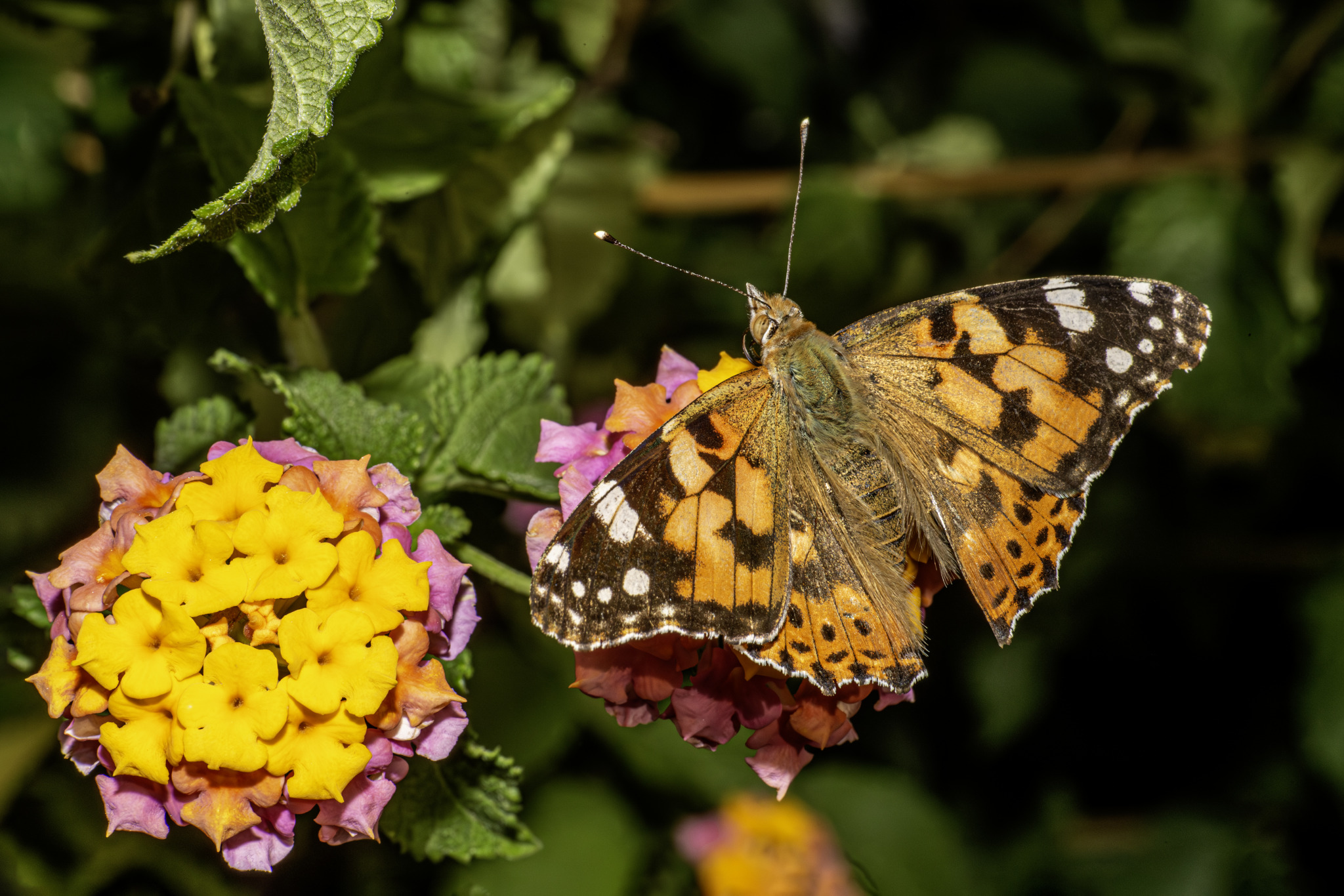The Painted Lady (Cynthia cardui), also known as the Cosmopolitan, is one of the most widely distributed butterfly species in the world. Known for its remarkable migratory behavior and distinctive appearance, it can be found on almost every continent.
Description
- Appearance:
- Wingspan: Approximately 5-9 centimeters (2-3.5 inches).
- Coloration: The upper side of the wings is a mix of orange, black, and white spots and patterns. The forewings have black and white spots, while the hindwings have rows of black spots near the margins. The underside is more muted with brown, gray, and white patterns, aiding in camouflage.
- Body: The body is dark brown to black with some white markings.
Habitat
- Distribution: The Painted Lady is found on every continent except Antarctica. Its range includes North America, Europe, Asia, Africa, and Australia.
- Preferred Environment: This butterfly is highly adaptable and can thrive in a variety of habitats, including meadows, gardens, roadsides, fields, deserts, and urban areas.
Behavior and Ecology
- Diet:
- Caterpillars: Larvae feed on a wide range of host plants, primarily in the Asteraceae family, such as thistles, mallows, and nettles.
- Adults: Adult Painted Ladies feed on nectar from a variety of flowers, including thistles, asters, and sunflowers. They prefer brightly colored flowers with a good supply of nectar.
- Migration:
- The Painted Lady is known for its long-distance migrations. In North America, they migrate from Mexico and the southern United States to northern regions in the spring and summer. In Europe, they migrate from North Africa to Europe and sometimes as far north as the Arctic Circle.
- Migration patterns are influenced by climatic conditions and availability of food resources.
Life Cycle
- Egg: Eggs are laid singly on the host plants. They are small, green, and ribbed.
- Larva (Caterpillar): The caterpillars are spiny and variable in color, usually black or dark brown with yellow or white stripes and spots.
- Pupa (Chrysalis): The chrysalis is mottled brown or gray, often with metallic spots. It is usually attached to the underside of a leaf or other sheltered location.
- Adult: The adult butterfly emerges from the chrysalis, expands its wings, and begins its life as a nectar-feeding pollinator.
Conservation
- Status: The Painted Lady is not considered threatened and is abundant in many parts of its range.
- Conservation Efforts: Conservation focuses on maintaining healthy ecosystems that support a diversity of flowering plants and host plants for larvae. Habitat preservation and reducing pesticide use are important for supporting butterfly populations.
Observing Painted Ladies
- Best Times: Painted Ladies are most visible during their migration periods in spring and fall, although they can be seen throughout the warm months.
- Watching Tips: Look for them in gardens, fields, and other areas with abundant flowering plants. Their distinctive flight pattern and bright coloration make them easy to spot.
Interesting Facts
- Widespread Distribution: The Painted Lady is one of the most widely distributed butterfly species, found in diverse habitats across the globe.
- Migratory Behavior: They are known for their impressive migratory journeys, sometimes traveling thousands of kilometers.
- Variable Populations: Population sizes can vary significantly from year to year, depending on environmental conditions such as temperature and rainfall.
Summary
The Painted Lady (Cynthia cardui) is a globally distributed butterfly known for its vibrant coloration and remarkable migratory behavior. Its adaptability to various habitats and role as a pollinator make it an important species in ecosystems worldwide. Observing Painted Ladies provides a glimpse into the fascinating dynamics of butterfly migration and the interconnectedness of natural habitats.tterflies.
Visited 855 times, 3 visit(s) today
Views: 1428
Subscribe to the newsletter:
